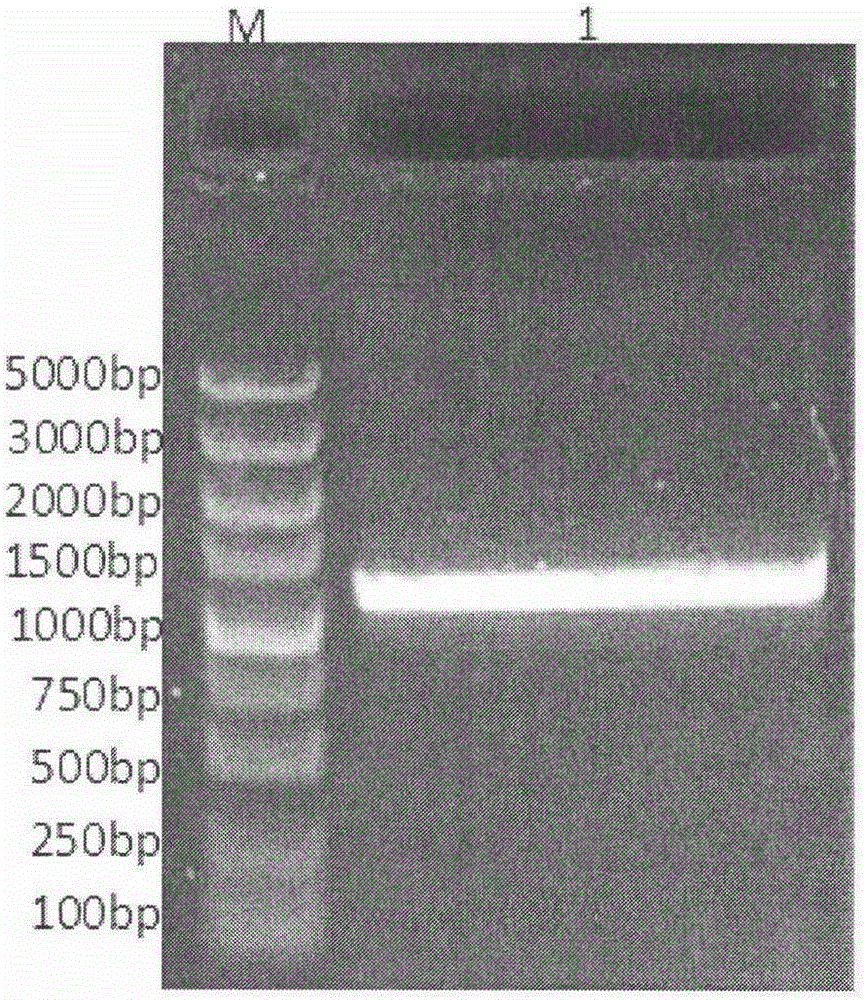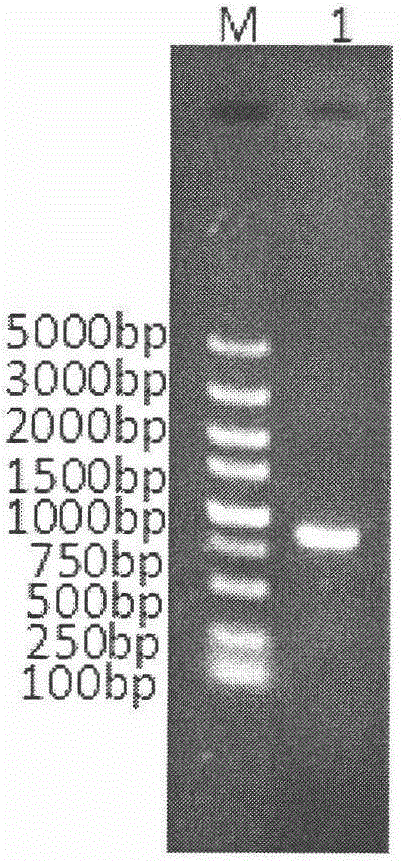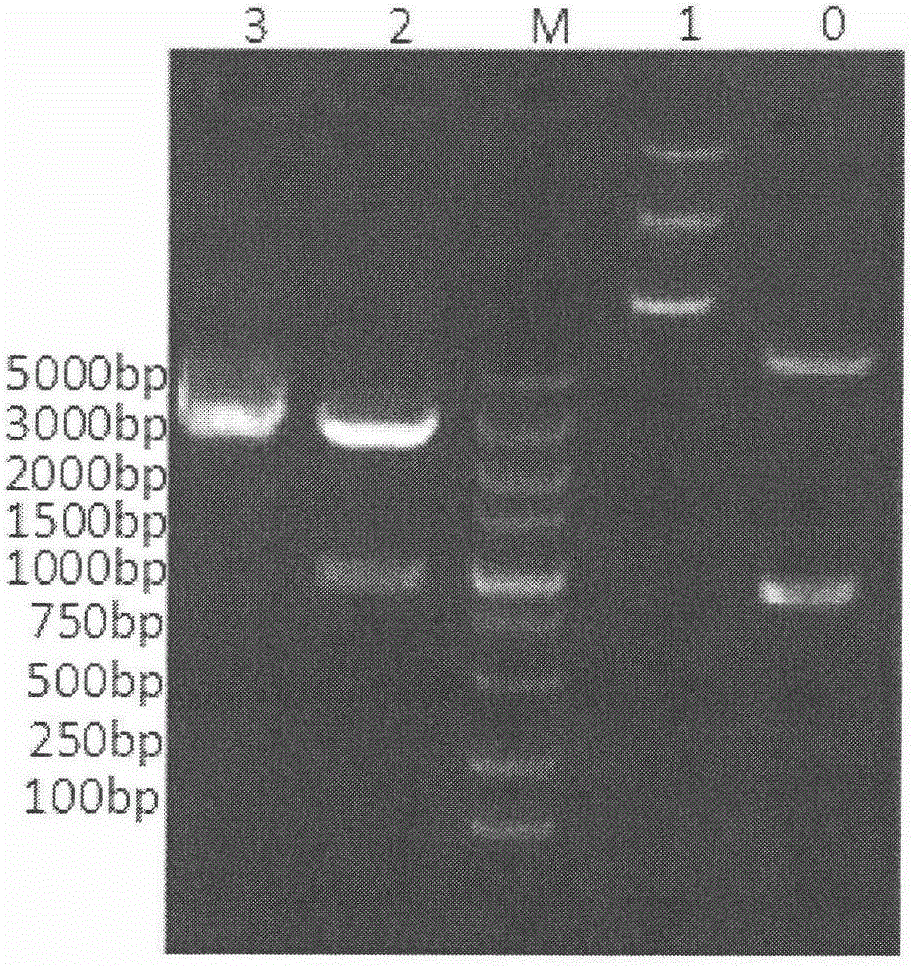Biological method for improving yield of L-5-methyltetrahydrofolate by virtue of two-plasmid engineering bacteria
A technology of methyltetrahydrofolate and recombinant plasmid is applied in the field of synthesis of metabolic engineering technology, and can solve the problems of high production cost, difficult separation of optical isomers, complicated synthesis process by chemical synthesis method, etc., and achieves reduction of production cost. and energy consumption, the effect of improving the utilization rate of raw materials
- Summary
- Abstract
- Description
- Claims
- Application Information
AI Technical Summary
Problems solved by technology
Method used
Image
Examples
Embodiment 1
[0039] Construction of embodiment 1 co-expression plasmid
[0040] 1.1 Primer design
[0041] According to the GlyA and MetF sequences reported by NCBI, the following 4 primers were designed:
[0042]GlyAUP: AAGCTTATGTTAAAGCGTGAAATGAACA
[0043] GlyADOWN: GAATTCTTATGCTGAAACCGGGTAAC
[0044] MetFUP: GAGCTCATGAGCTTTTTTCACGCCAG
[0045] MetFDOWN: CTCGAGTTATAAACCAGGTCGAACCCC
[0046] Among them, GlyAUP and GlyADOWN are used to amplify the GlyA coding region; MetFUP and MetFDOWN are used to amplify the MetFDE coding region; GlyAUP, GlyADOWN, MetFUP, and MetFDOWN are respectively introduced with HindIII restriction sites, EcoRI restriction sites, and SacI restriction sites , XhoI restriction site.
[0047] 1.2 PCR amplification of GlyA sequence
[0048] The genome of Escherichia coli E.coli BL21 was extracted.
[0049] Using the Escherichia coli E.coli BL21 genome as a template, and using GlyAUP and GlyADOWN designed in step 1.1 as primer pairs, perform PCR amplification, as ...
Embodiment 2
[0070] Transform the plasmids pET28a-GlyA-MetF, pET28a-GlyA and pET28a(+) into the host strain E.coliBL21(DE3), respectively named PGM01, PGM02 and P03, and coat solid LB containing 50 μg / mL kanamycin Plates were cultured at 37°C until the transformants grew out. Among them, E.coli BL21(DE3) is a non-kanamycin-resistant strain and cannot grow on a solid LB plate containing kanamycin. Therefore, the transformants grown on the plate are transformed with pET28a-GlyA-MetF , pET28a-GlyA and pET28a(+) plasmids in E. coli.
[0071] Randomly pick a number of transformants containing pET28a-GlyA-MetF, pET28a-GlyA and pET28a(+) plasmids, shake flask fermentation culture, add inducer when the OD value is between 0.6 and 0.8, and induce for 4 to 10 hours , sonicate the cells, and perform SDS-PAGE on the soluble protein, the results are as follows Figure 5 . according to Figure 5 The results showed that PGM01 and PGM02 expressed high levels of GlyA, MetF and GlyA, respectively, in li...
Embodiment 3
[0074] Embodiment 3PGM01 and PGM02 and E.coli BL21 (DE3) shake flask fermentation L-5-methyltetrahydrofolate
[0075] Single colonies of PGM01, PGM02 and E.coli BL21(DE3) (original bacteria, named BL21) grown overnight on solid LB plates at 37°C were inserted into liquid LB medium, and cultured in shake flasks overnight.
[0076] Take an appropriate amount of bacterial solution and transfer it into the shake flask fermentation medium, and cultivate for 11 hours. Then 1% was inoculated, and the inducer was added when the OD value was between 0.6 and 0.8; the precursor folic acid 0.05g and glycerol 8% were added in due course, and samples were taken at 4h, 6h, 8h, and 10h of fermentation to detect the L- The cumulative amount of 5-methyltetrahydrofolate, the test results are as follows figure 1 shown.
[0077] According to the results in Table 1, the accumulation of L-5-methyltetrahydrofolate in PGM01, PGM02 and BL21 reached the highest level at 10 hours of fermentation, reach...
PUM
 Login to View More
Login to View More Abstract
Description
Claims
Application Information
 Login to View More
Login to View More - R&D
- Intellectual Property
- Life Sciences
- Materials
- Tech Scout
- Unparalleled Data Quality
- Higher Quality Content
- 60% Fewer Hallucinations
Browse by: Latest US Patents, China's latest patents, Technical Efficacy Thesaurus, Application Domain, Technology Topic, Popular Technical Reports.
© 2025 PatSnap. All rights reserved.Legal|Privacy policy|Modern Slavery Act Transparency Statement|Sitemap|About US| Contact US: help@patsnap.com



